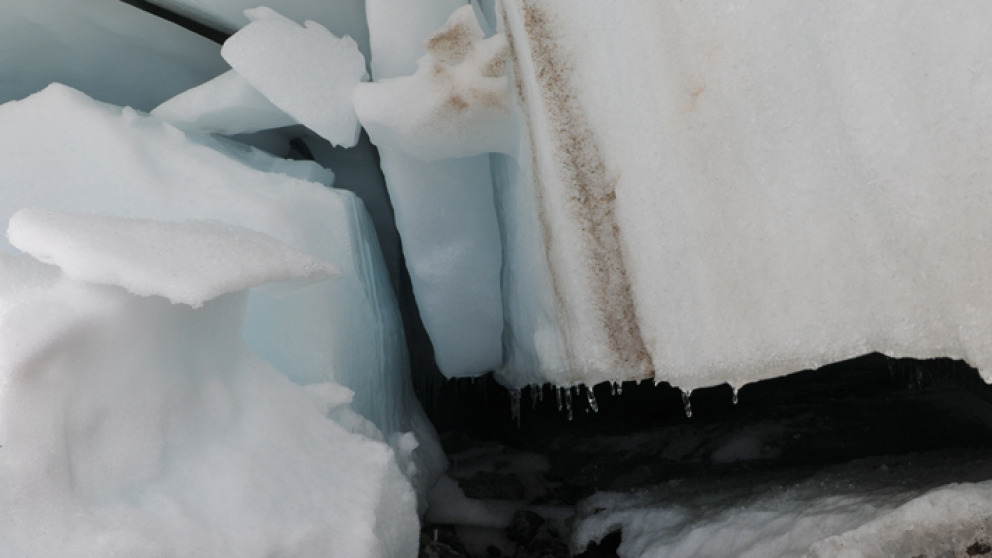Headline:
One Healthy Arctic: The Challenges and Linkages between Environmental and Human Health and Well-being

A couple of weeks ago, I had the opportunity to attend the latest Arctic Summit Science Week in Fairbanks, Alaska. Building on the outcomes of last year’s summit in Toyama, Japan (see my previous post), the scientific community is increasingly seeking to unify synergies between the social and natural sciences to tackle problems related to Arctic change. As many of you will know, the Arctic is particularly vulnerable to climate change, and its impacts affect multiple dimensions of the biological, physical, and human systems interacting inside the Arctic and beyond. Most of the research and measures seeking to address these impacts have until recently focused on their climatic, economic, and political dimensions within the context of a progressive expansion of mining, energy, and transport activities within the Arctic circle, but there is a growing movement to integrate other areas of research relevant to the impact of Arctic change, with a major focus on local communities.

I am not a social scientist myself but I work in an interdisciplinary environment and always find it interesting to attend side events dealing with issues beyond the scope of my own research on the physical aspects of the Arctic atmosphere. This time my curiosity led me to attend the Stakeholder Workshop on Research Needs for Arctic Health and Wellness, organised jointly by the Arctic Monitoring and Assessing Program (AMAP) and the EU-PolarNet programme, which reviewed the current status of research related to health and wellness in the Arctic. Among the highlights of this event was a very interesting discussion on the perspectives and interconnections of climate change and health in the Circumpolar North by Ashlee Cunsolo-Willox from Cape Breton University. This highly interesting presentation reminded us that climate change represents the biggest public health threat of the twenty-first century and that, sadly, the communities in the Circumpolar North are particularly susceptible to its impacts. As researchers have previously noted, the range of public health challenges arising in connection with environmental and climate change impacts in the Arctic Region include increasing morbidity and mortality as the occurrence of extreme weather events (storms, flooding, extreme temperatures etc.) rises, coupled with an increase in the incidence of injury and mortality associated with unpredictable ice and storm conditions as well as increased mental and social stress resulting from changes in the environment and the loss of traditional life-styles.[1] Other risk factors include potential changes in bacterial and viral diseases and in access to quality water sources. These aspects have been largely neglected in public debate on climate change, which has seen little input from the fields of medicine and psychology, for example, despite their importance for the optimal functioning of societies and ecosystems.
There are also serious concerns around public mental health and suicide rates within Arctic communities. Factors such as solitude, cultural change, the loss of land and resource ownership, and a lack of connection between individuals, families and environments are all stressors that lie beyond the individual’s control. Another interesting talk on the subject of public mental health in the Arctic regions focused on efforts to implement collective and community-based systems interventions for the prevention of suicide. I was stunned to learn that the incidence of youth suicides in Arctic communities is 37% higher than in the rest of the world. The eight Arctic states (Canada, Denmark (including Greenland and the Faroe Islands), Finland, Iceland, Norway, Russia, Sweden and the USA) all rank poorly in global statistics on suicide and Greenland has the highest suicide rate in the world, with 83 suicides per 100 000 inhabitants. Indigenous Alaskan males have the highest rate of suicide in the US, where nationwide initiatives such as RISING SUN are working to reduce the incidence of suicide in indigenous populations. Life expectancy in Arctic communities is shorter overall, with high suicide rates fuelled by alcohol and substance abuse. This problem is epidemiological and several studies have related this phenomenon in Arctic communities to alcoholism, depression, poverty, dysfunctional families, and mental health impacts resulting from historical and generational trauma. All these factors are compounded by climate change impacts and the progressive development of the Arctic Region.
Of course, the range of factors impacting on human health and well-being include both mental and physical components. As climate change impacts on other species in the Arctic the follow-on effects in turn impact on human health. Wildlife, including fish, birds and mammals, is affected directly and indirectly by the emission of greenhouse gases, short-lived climate pollutants and other water- and airborne contaminants (i.e. heavy metals such as mercury), endangering diverse species along the food chain. Pál Weihe from the Faroese Hospital System stressed that epidemiologists working in the Arctic Region need to focus on the root of the problem as research has shown that so-called Persistent Organic Pollutants (POPs) released into the environment enter the food chain through soils, plants, fish and wildlife, with detrimental effects to human health in Arctic communities including a heightened prevalence of Type 2 diabetes in Arctic indigenous populations.
In another talk, Jim Berner from the Alaska Native Tribal Health Consortium presented an initiative that aims to strengthen animal, environmental, and human health in the Arctic by analysing the major concerns of Arctic communities relating to food and water security. Initiatives such as RAMP (Rural Alaska Monitoring Program) involve communities in the monitoring of environmental and climatic changes, a practice that helps to dispel anxiety and build trust between communities and researchers. In this programme, communities are given the information and training necessary to identify urgent threats and are invited to cooperate in a health network. Information gathered through this initiative is combined with oceanographic and climate data, enabling researchers to identify climate change impacts on human health through both qualitative and quantitative inputs generated within a collaborative context.

WHO defines health as “… a state of complete, physical, mental and social well-being and not merely the absence of disease or infirmity.” The summit showed that scientists are working to develop a new research agenda that reflects this holistic perspective. This will include efforts to enable indigenous researchers to work according to their needs. Researchers studying human health in the Arctic should partner with communities to build into local systems and with other researchers working in the social and natural sciences to create opportunities to share resources, insights, and tools. Creating solutions that address needs and issues specific to this region requires that researchers are trained within an interdisciplinary perspective that promotes an awareness of the linkages between areas of knowledge and diverse actors.
Health and wellness are holistic and span the dimensions of environmental, cultural, social, mental, physical, and spiritual well-being at the individual and the collective level. Self-respect and respect for our surroundings are the basis of wellness. Maintaining healthy communities in the Arctic (and the world in general) calls for a more holistic and integrated response across policy, research, and practice. As the conference statement notes, addressing Arctic change successfully will require cooperation across cultural, disciplinary, and political boundaries. More specifically, it calls for the development of a pan-Arctic, cross-component and multipurpose observing system that is considerate of and responsive to both local and global needs and that incorporates the best of Indigenous Knowledge and scientific approaches.
[1] Parkinson AJ, Berner J. Climate change and impacts on human health in the Arctic: an international workshop on emerging threats and the responses of arctic communities to climate change. Int J Circumpolar Health. 2009;68:88–95. [PubMed]
Header image: (c) Karsten Häcker
